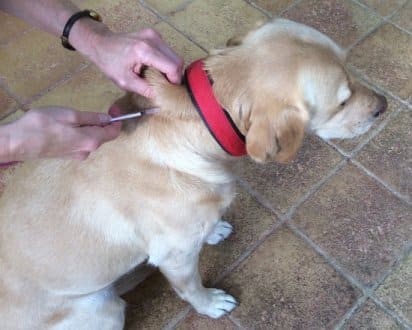Canine diabetes
Diabetes is a common condition among humans, and while it’s not as common among dogs, canine diabetes is a possibility for your furry friend. Just like humans, dogs with diabetes can benefit from diet and lifestyle changes. However, it’s most likely that your veterinarian will prescribe insulin if your pet is diagnosed with diabetes.
While administering insulin to your energetic pup might sound like a challenge, it is simpler than it sounds. Like every other task that comes with having a pet, it will soon become a habit.
How to administer insulin to a dog
Administering insulin can be particularly difficult if your dog is does not like being handled. One of the easiest ways to handle a difficult dog is to recruit a set of helping hands. However, if nobody is available to help you, there are other ways to distract your pet.
First, you need to become familiar with how to administer insulin. Ensure that you’re storing your dog’s insulin away from sunlight and high temperatures. Unused bottles must be refrigerated but never frozen. Always be sure to check the expiration date, as insulin cannot be used after it expires, and dispose of vials that have been compromised.
While insulin is sensitive to extreme heat and cold, it is safe to remove the vial from the refrigerator prior to administering it to your dog. Allowing the medication to reach room temperature may provide a more pleasant injection experience, which can be especially important for difficult dogs.
Next, roll the vial gently between your hands. Remove the cap from the needle and, holding the vial down, insert the needle through the bottom. Draw the plunger back, filling the syringe with insulin up to the correct dose. Read the measurement from the needle-facing end of the rubber stop. Remove the needle from the vial.
How to give a difficult dog an insulin shot
Insulin should always be administered after or during a meal. If you do not have an extra person around to help you, the best way to give a difficult dog an insulin shot is to administer the shot while the dog is distracted with eating its meal. To administer the shot, place the needle in your dominant hand. Wrap your free hand around your dog’s neck, toward its back and shoulders. Grab a fold of your dog’s skin on its back or shoulders and insert the needle at a forty-five-degree angle.
Before administering the insulin, pull the plunger back slightly to make sure no blood comes out. If blood is drawn into the syringe, it means you have hit a blood vessel and must find another injection site. Once you’ve found a safe spot, push down on the plunger with your thumb. Remove the needle, again at a forty-five-degree angle, and safely dispose of the needle.
The next time you administer insulin to your dog, choose a different spot to insert the needle. In addition to your dog’s back and shoulders, you may also insert the needle in a fold of skin on the side of your dog’s chest or abdomen.
Once you’ve removed the needle and the insulin shot has been given, reward your dog. This could be a pat on the head or a small treat, coupled with praise. This is a particularly important step, as it reinforces good behaviour and helps establish a calm, rewarding experience.


